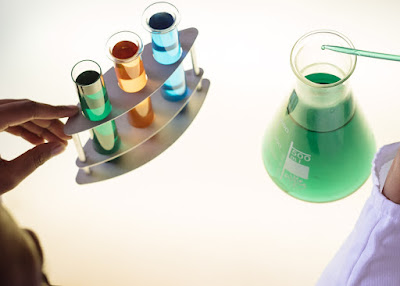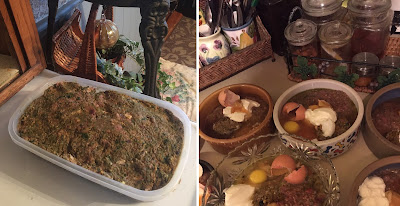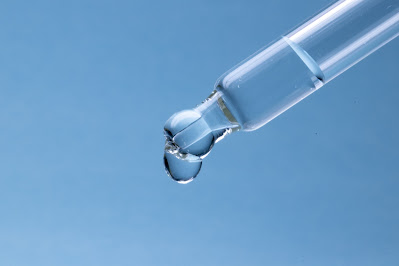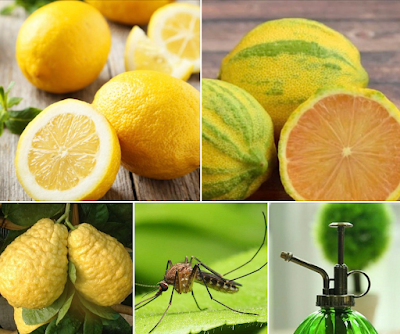Artificial, Natural, Organic Flavor in Dog, Cat Food – What’s the Difference?
★ 3 min read
In this article:
- Artificial, natural, organic flavor, what's the difference
- Artificial vs. natural flavor
- The devil is in the detail - natural isn't natural
- Incidental additives in artificial and natural flavor
- Organic flavor
- Why does the industry add flavor to pet products?
- Conclusion
Artificial, natural, organic flavor in dog, cat food – what’s the difference?
Artificial, natural, organic flavor in dog, cat food is
classified as a food additive, and all three fall under the FDA’s GRAS
(Generally Recognized as Safe) regulations.
You would think that ‘generally recognized as safe’ mandated by the FDA
equates to safe-to-consume right?
WRONG.
Artificial and natural flavor is a
source of allergens, toxins and carcinogens - sadly organic flavor can be
little better. Does that beg the question, so why are these unsafe
(supposed-to-be ‘generally recognized as safe’) substances added to your dogs,
and cat’s products? For an answer to that question, read on here.
If you are purchasing prepared food,
treats, drugs, or supplements for your dog and cat it’s time to start checking
labels.
Artificial vs. Natural Flavor
The difference between artificial and
natural flavor is minimal.
Artificial Flavor
The FDA’s definition of artificial flavor or artificial flavor is
defined as:
“any substance, the function of which
is to impart flavor, which is not derived from a spice, fruit or fruit juice,
vegetable or vegetable juice, edible yeast, herb, bark, bud, root, leaf or
similar plant material, meat, fish, poultry, eggs, dairy products, or
fermentation products thereof ”.
Natural Flavor
The
FDA’s definition of natural flavor or natural flavor is defined as:
“the essential oil, oleoresin, essence or
extractive, protein hydrolysate, distillate, or any product of roasting,
heating or enzymolysis, which contains the flavoring constituents derived from
a spice, fruit or fruit juice, vegetable or vegetable juice, edible yeast,
herb, bark, bud, root, leaf or similar plant material, meat, seafood, poultry,
eggs, dairy products, or fermentation products thereof, whose significant
function in food is flavoring rather than nutritional”
What Does This Really Mean?
A single food flavor can include hundreds of
chemical ingredients.
The flavor industry uses thousands of flavor chemicals.
Approximately 25% of these chemicals are FDA approved and regulated. The other
75% of chemicals used are not directly regulated by the FDA.
The FDA allows the
flavor industry –
specifically the Flavor and Extract Manufacturers Association (FEMA), to self-regulate.
Under
the FDA’s ‘generally recognized as safe’ (GRAS) regulations, FEMA can add
substances (ingredients) without the FDA’s approval. Doing so is not a
chargeable offense. It is 100% legal and fully sanctioned by the FDA. If you'd like to learn more about GRAS, Food Safety News offers a
simple-to-understand article on the subject.
Both the FDA and FEMA’s sanctioned flavor additives
include suspected and known allergens, dementia triggers, toxins and
carcinogens, i.e. propylene glycol, MSG, nitrates, and nitrites. No surprise
though as the FDA has approved many health-deteriorating food additives including
preservatives discussed here, and food coloring
here. As for FEMA, their priority is profit. FEMA’s
members come from the food flavor industry. FEMA is controlled by the food flavor
industry. FEMA IS the food flavor
industry. Another FDA failure to protect
ours, and our companion animals’ health.
The Devil is in The Detail - Natural Isn't Natural
Artificial flavor is made using 100%
synthetic chemicals.
Natural flavor (as regulated by the FDA), must contain one
substance that was extracted from a plant or animal. The extracted substance is then highly processed by
various methods. For example synthetic chemical processing, high-heat processing, etc.
Natural
flavor typically contains significantly more complex synthetic-chemical compounds than
artificial flavor. These complex chemical compounds include emulsifiers,
preservatives, and solvents known to trigger and exacerbate health issues.
The chemical compounds in flavor fall
under the classification ‘incidental additives’.
The FDA does not require
manufacturers to list, or disclose incidental additives. Another absolute failure by the FDA to protect
health. You will not see flavor ingredients listed on a product’s label. The
chemical compounds are a hidden ingredient.
The next time you see ‘liver flavor’,
‘natural liver flavor, smoke flavor, or natural smoke flavor etc., forget
images of a single, wholesome flavor ingredient. The product you are looking
at contains multiple health deteriorating chemicals.
Incidental Additives in Artificial and Natural Flavor
Incidental
additives used in artificial and natural flavor include derivatives of Monsanto’s
GMO corn and soy, GMO canola, GMO sugar cane.
On March 20, 2015 the International Agency for Research on Cancer (IARC)
released its findings on Monsanto’s herbicide glyphosate (herbicide used on GMO
crops), concluding that there is “sufficient evidence of
carcinogenicity” based on laboratory studies. You can read the World Health
Organization (WHO) report on IARC’s findings here. The
Wall Street Journal’s comments on the IARC’s press release here..
Another interesting fact – the FDA’s Deputy Commissioner for Foods and
Veterinarian Medicine is Michael R. Taylor. Mr. Taylor is Monsanto’s former vice
president of Public Policy. Mr. Taylor oversaw the FDA’s policy on GMOs.
Unethical, yes - but it gets worse. Mr. Taylor developed, and pushed through
his Policy on use of GMOs without due process. The FDA have a standard process
for safety testing and screening that must be undertaken prior to approval
–safety testing and screening was NOT done for GMOs.
Manufacturers
are permitted to label flavor as ‘natural’ even if derived from genetically
engineered (GE) crops. Why? Health Canada and the FDA have not, at this time
fully defined the term ‘natural’. You would think it would be a priority to
define this much-used food industry term. Perhaps the delay is due to Mr.
Taylor’s influence - protecting the profit margin of companies such as
Monsanto, at the expense of human, and non-human animal health.
Organic Flavor
Organic
natural flavor rates slightly better than the other two types of flavor
but organic natural flavor can still contain inappropriate ingredients.
If you are looking at a product labelled USDA Organic
don’t assume that the flavour used in the product is organic.
100 % Organic
As defined by the FDA, products labeled 100%
Organic should contain only organically produced ingredients and processing
aids, excluding water and salt – no other ingredients are permitted. 100% organic flavor gets a
slightly better rating due to the FDA’s regulation that states organic natural flavor
“must have been produced without synthetic solvents, carriers and artificial
preservatives.”
USDA Certified Organic
USDA Certified Organic products must contain 95%
organic ingredients, the other 5% of the
ingredients may be non-agricultural substances, and for minor ingredients such
as flavor, can be non-organic. The only restriction, the flavor must not be
produced using the following excluded methods – GMO, sewage sludge and ionizing
radiation.
Made
With Organic Ingredients
Products labelled “made with Organic Ingredients” 70% to 95% organic, are not actually ‘organic
products’ as the remaining 30% of ingredients can be derived from pesticide-grown botanical, artificial or natural flavor, etc.
Why Does the Pet Industry add Flavor to Pet Products?
So why does the pet industry and big pharma add flavor to:
- Dog and cat food.
- Treats.
- Supplements.
- Conventional medications.
Hint, it's not for the health and well being of your dog and cat.
Find out the real reason.
- Go to this article.
Conclusion
Your dog and cat’s food, treats, medicines and supplements
should not contain artificial, natural or organic flavor.
Holistic Diet, Nutrition, Wellness Services Tailored to Your Individual Dog and Cat
For information about my holistic diet, nutrition, wellness services visit my:
Maintain good health | Address acute and chronic health issues | Pre and post surgery support and recovery
My holistic wellness services are available worldwide via video consultation.
🌎 USA | Canada | UK | Europe | Australia | New Zealand | Asia | South and Central America | Africa | UAE
📱 FaceTime | Facebook | Skype | WhatsApp
Holistic Behavioral Services For Your Dog
For information about my holistic behavioral services visit my:
For dogs of all ages, sizes and breeds
My holistic behavioral services are available locally in-person and worldwide via video session.
🌎 USA | Canada | UK | Europe | Australia | New Zealand | Asia | South and Central America | Africa | UAE
📱 FaceTime | Facebook | Skype | WhatsApp
Affiliations to Companies
✓ None.
✓ I don't sell food or supplements.
✓ I'm not aligned with any companies.
✓ None.
✓ I don't sell food or supplements.
✓ I'm not aligned with any companies.
Article by Karen Rosenfeld










